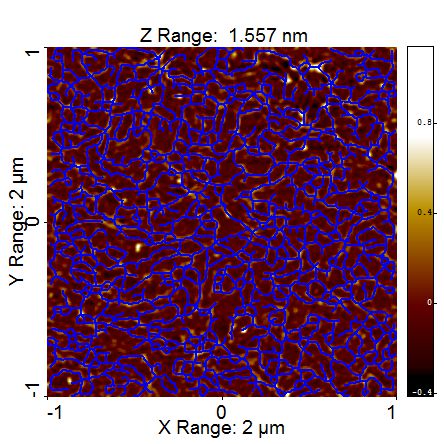
Leader: dr inz. Justyna Cybulska
Team: dr hab. Artur Zdunek, prof. IA PAN; dr Piotr Pieczywek; dr Eryk Łopaciuk; mgr Arkadiusz Kozioł; dr Joanna Mierczyńska - współpraca
Cell wall polysaccharides, cellulose, hemicellulose and pectin, have many interesting properties as individual biopolymers and as composites. To date not all interactions between the polysaccharides have been explained and continuously new methods of their application are developed. Other interesting and not fully known compounds are exopolysaccharides produced by algae and bacteria. Taking into consideration current trends in polysaccharide research in the world [3] and our own, documented experiences [1,2,3], modeling of mechanical and physico-chemical properties of plant and extracellular polysaccharides was chosen as the aim of our studies.
Plant polysaccharides play many biological functions, they can be used as functional materials in food engineering, pharmacy, medicine, as components of packaging and construction materials. Next group of polysaccharides which occurs in natural environment are extracellular polysaccharides, like bacterial cellulose produced by Gluconacetobacter xylinus or polysaccharides produced by microalgae. Due to their purity and availability they can be used as potential food and energy sources. Polysaccharides can modified under the influence of external physical (pressure, temperature, ultrasounds) and chemical factors (solvents, pH, metal ions) [4, 5, 6]. Because of their complex structure and the presence of various functional groups, they can react with different chemical compounds.
 |
 |
Fig. 1. The nanostructure of self-assembled pectin fraction extracted with sodium carbonate. |
Fig. 2. The nanostructure of an exopolysaccharide produced by microalgae Dictyosphaerium chlorelloides. |
An expected effect of the research will models describing structure and interactions between cell wall polysaccharides. This knowledge let us for better understanding of role of polysaccharides in shaping cell walls properties of plants. Modelling of interactions of cellulose, hemicellulose and pectin with other chemical compounds should facilitate discovering new practical functions of this biopolymers in the context of new applications. Testing exopolysaccharides is aimed at the description of their chemical structure and physical properties as well as determination possibilities of their usage.
Model studies will be performed using computational methods. Model cellulose, hemicellulose (as XXXG xyloglucan) and pectin (as homogalacturonan and rhamnogalacturonan I) molecules will be worked out. The molecules will be subjected to external forces and the results of the simulations will be compared with AFM experiments. The new method of stretching of polysaccharide single molecules is planned to be developed. Theoretical oscillatory spectra will be used to interpretation of experimental spectra of standard polysaccharides. They will be used to detailed description of vibrations which are responsible for occurring particular bands on Raman and FT-IR spectra.
The nanostructure of exopolysaccharides produced by Dictyosphaerium chlorelloides algae will be studied under the angle of their capability to self-assembly. AFM images of these biomolecules will be automatically analyzed using professional software present in our laboratory.
Realization of the task should contribute to development of knowledge about nanostructure and molecular structure of polysaccharides from natural sources. This approach meets lots of interest from between scientists in the world but still is not popular in Poland. Our research on polysaccharides are systematically developed since 2006 and bring results in the form of publications and projects. The multidisciplinary attitude contains elements of biophysics, biotechnology, chemistry and biology. We are also oriented to practical application of our research, for example in new technologies of polysaccharides processing.
- Cybulska J., Brzyska A., Zdunek A., Woliński K. (2014) AFM study on pectin structure form carrot and simulation of force spectroscopy of galacturonic acid molecules. PLOS One, 9(9):e107896.
- Cybulska, J., Zdunek, A., Kozioł, A. (2015) Structural changes of cell wall pectin in the carrot during postharvest ripening. Food Hydrocolloids. 43, 41-50.
- Cybulska J., Vanstreels E., Ho Q.T., Courtin C.M., Van Craeyveld V., Nicolaï B., Zdunek A., Konstankiewicz K., (2010) Mechanical characteristics of artificial cell walls. Journal of Food Engineering 96, 287–294.
- Płaziński W. (2012) Conformational properties of acidic oligo- and disaccharides and their ability to bind calcium: a molecular modeling study. Carbohydrate Research 357, 111–117.
- Noto R, Martorana V, Bulone D, San Biagio PL (2005) Role of Charges and Solvent on the Conformational Properties of Poly(galacturonic acid) Chains: A Molecular Dynamics Study. Biomacromolecules 6: 2555-2562
- Braccini I, Rodríguez-Carvajal MA, Pérez S (2005) Chain−Chain Interactions for Methyl Polygalacturonate: Models for High Methyl-Esterified Pectin Junction Zones. Biomacromolecules 6(3): 1322–1328
